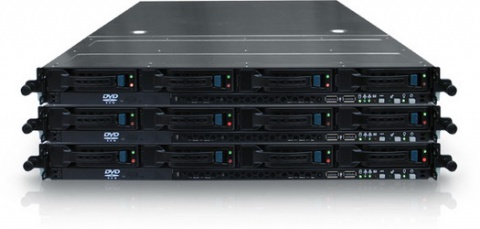NetUP's Video on Demand server is built on an industry-standard platform and supports over 100 concurrent streams (1000 subscribers at normal VoD peak take-up rate) at typical MPEG-2 compression rate of 4 Mb/s per stream. Both unicast and multicast streaming modes are supported.
Server storage comprises four hot-swap SATA-II hard disks, 1 TB each. The total HDD space in the standard configuration is 4 Tbytes or more than 1000 movies in DVD quality. External data storage can be connected where required.
Movies are stored in MPEG-2 or MPEG-4 AVC (H.264), transport stream - both SD and HD are supported. Compression rate can be modified to match set-top box and/or downstream network performance. Video content can be loaded via smb or ftp.
Movie descriptions, displayed in the Middleware user interface, can be synchronized with a central database on the Internet (Media Knowledge Base, www.media-kb.com). The database contains the full and structured information on multimedia content, is multilingual and freely accessible.
The server is implemented in a 1U rack-mount case. It is possible to connect VoD servers into a cluster. This allows our customers to achieve almost any performance and provide VoD in distributed networks.
Using NetUP's CAS allows to stream already encrypted media content from the VOD server.
Time Shifted TV, Network Personal Video Recorder, and TV on Demand are implemented as a separate server based on the same framework.
New content distribution system
Starting from 1.7, the NetUP VoD software includes a new content distribution system. Video content may be uploaded to the VoD server in any supported format. Afterwards, the content is automatically converted into the internal format to be later distributed throughout other VoD servers in the cluster.
An intelligent storage system keeps media files in fragments spread between different servers, thus avoiding the unnecessary overhead of duplicating every file on all VoD servers in the cluster.


